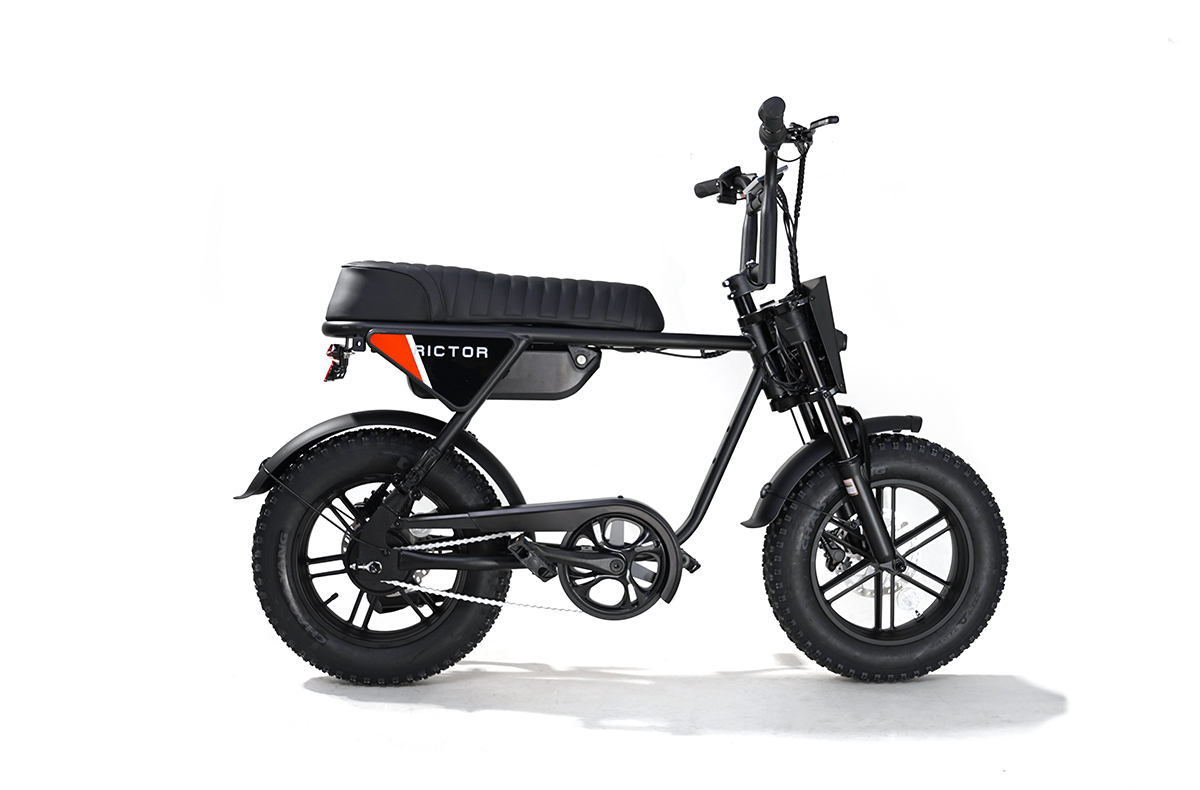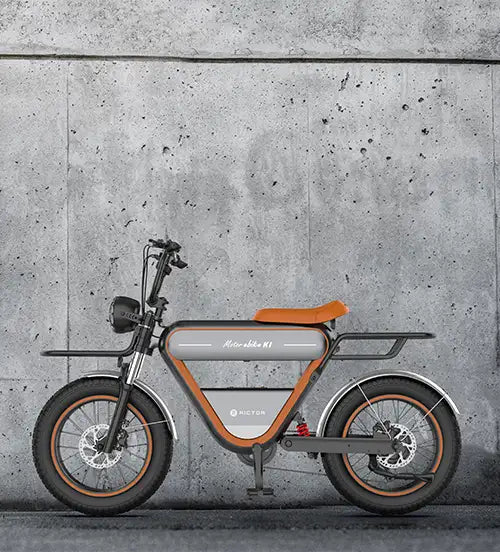
How To Fix a Flat E-Bike Tire
A flat tire can quickly turn your smooth electric bicycle ride into a frustrating experience. Whether you're commuting to work or enjoying a weekend trail, knowing how to repair your e-bike tire is an essential skill for any electric bike owner. This comprehensive guide will walk you through the entire process of fixing a flat e-bike tire, from identifying the problem to getting back on the road with confidence.
Why E-Bike Tires Go Flat
Before diving into the repair process, it helps to understand why e-bike tires go flat in the first place. E-bikes typically experience flats for reasons similar to regular bikes, but with a few key differences. The additional weight of the motor and battery puts extra pressure on tires, making them more vulnerable to punctures. Common causes include:
-
Sharp objects like glass, thorns, or nails piercing the tire
-
Pinch flats from hitting curbs or potholes at speed
-
Valve stem issues or slow leaks
-
Natural wear and aging of the tire rubber
E-bike tires tend to wear faster due to the increased torque and weight, so regular inspection is crucial for preventing unexpected flats.
Tools You'll Need for the Job
Gathering the right tools before you start will make your tire repair much smoother. Here's what you should have on hand:
-
Tire levers (plastic ones prevent rim damage)
-
Spare inner tube or patch kit
-
Bike pump with pressure gauge
-
Wrench set (for removing the wheel)
-
Clean cloth
-
Water bottle (to check for leaks)
-
Work gloves to protect your hands
For e-bikes specifically, you might also need:
-
Torque wrench (for precise tightening of axle nuts)
-
Cable disconnection tools (if wheel has motor connections)
-
Bike stand or something to prop up your e-bike
Having these tools ready will save you significant time and frustration during the repair process.
SEE ALSO Choosing Your Ride: Fat Tires vs. Thin Tires for Electric Bikes

Powering Down Your E-Bike
When working on an e-bike, electrical safety is paramount. Before attempting any tire repair:
-
Turn off the e-bike completely
-
Remove the battery if possible
-
Disconnect any motor cables that might interfere with wheel removal
-
Ensure the bike is stable and won't fall during repair
This safety step is unique to e-bikes and prevents potential electrical shorts or system damage while you're working on the tire.
Removing the Wheel from Your E-Bike
Removing an e-bike wheel can be slightly more complex than a standard bike, especially for rear wheels with hub motors.
For Front Wheels:
-
Locate and loosen the axle nuts or quick-release lever
-
Carefully lift the bike and pull the wheel downward to remove
-
Place the bike on a stable surface with the fork facing down
For Rear Wheels with Hub Motors:
-
Shift to the smallest rear cog if applicable
-
Identify and disconnect any motor cables (take photos first to remember connections)
-
Loosen the axle nuts using the appropriate wrench
-
Release the brake if necessary
-
Pull back the derailleur (for chain models) and carefully remove the wheel
Take your time with this step, as rushing can damage cables or connections specific to your e-bike system.
Examining the Tire for Damage
Once the wheel is removed, conduct a thorough inspection:
-
Examine the outer tire for visible punctures, cuts, or embedded objects
-
Check the sidewalls for bulges or cracks that might indicate structural damage
-
Inspect the rim for dents or sharp edges that could cause recurring flats
-
Look at the rim tape to ensure it's properly covering all spoke holes
If you find the source of puncture, mark it with chalk or a piece of tape so you can pay special attention to that area during reassembly.
Removing the Tire and Tube
With the wheel off and inspected, you're ready to remove the tire and access the inner tube:
-
Fully deflate the tube by pressing on the valve core
-
Starting opposite the valve, insert tire levers under the tire bead
-
Work around the rim using the levers to unseat one side of the tire
-
Pull the tube out carefully, starting with the valve
-
Completely remove the tube while noting its position relative to the tire
For e-bikes with thick, reinforced tires, you might need more leverage. Take care not to pinch the tube with the levers, as this can cause new punctures.
Finding and Fixing the Puncture
Now that you have access to the inner tube, you need to locate and repair the leak:
Locating the Leak:
-
Inflate the tube slightly
-
Listen for escaping air or feel for it with your cheek
-
If not immediately obvious, submerge sections of the tube in water and look for bubbles
-
Once found, mark the puncture spot with a pen
Patching the Tube:
-
Thoroughly dry the area around the puncture
-
Roughen the surface with sandpaper (usually included in patch kits)
-
Apply vulcanizing solution and wait for it to become tacky
-
Firmly press the patch over the puncture and hold for 30-60 seconds
-
Check for proper adhesion and ensure no edges are lifting
Alternatively, you can replace the tube entirely with a new one, which is often faster and more reliable for e-bike users who need dependable transportation.
Inspecting the Inside of the Tire
Before reinstalling anything, take a moment to check the inside of the tire:
-
Run your fingers carefully along the inside of the tire to feel for sharp objects
-
Look for tiny glass shards or thorns that might still be embedded
-
Check for wear patterns or thin spots that could lead to future punctures
-
Ensure the tire bead is intact and not damaged
This step is crucial—skipping it often leads to immediate re-puncturing of your newly repaired or replaced tube.
Reinstalling the Tube and Tire
With your tube patched or replaced and the tire inspected, it's time to put everything back together:
-
Inflate the tube just enough to give it shape (overinflation makes installation difficult)
-
Insert the valve through the rim hole first
-
Feed the rest of the tube into the tire cavity carefully
-
Starting at the valve, work the tire bead back onto the rim by hand
-
Use tire levers for the last section if necessary, being careful not to pinch the tube
For e-bike tires, which are often tighter than regular bike tires, you might use the "pinch and roll" technique: pinch the tire beads together opposite where you're trying to mount, then roll the section you're working on onto the rim.
Inflating to the Proper Pressure
E-bike tires typically require higher pressure than standard bikes due to the additional weight they carry:
-
Check the recommended PSI range printed on the tire sidewall
-
Use a pump with an accurate pressure gauge
-
Inflate to the higher end of the recommended range for most e-bikes
-
Check that the tire is seated properly on the rim as you inflate
-
Listen for any popping sounds that indicate the bead seating correctly
Proper inflation is critical for e-bike performance, range, and preventing future flats. Under-inflated tires increase the risk of pinch flats and reduce your bike's efficiency.
Reinstalling the Wheel on Your E-Bike
Now comes the somewhat tricky part of getting the wheel back on your e-bike:
For Front Wheels:
-
Guide the wheel into the fork dropouts
-
Center the wheel between the fork arms
-
Tighten the axle nuts or quick-release to the specified torque
For Rear Wheels with Hub Motors:
-
Line up the wheel with the frame dropouts
-
Guide the chain onto the sprocket (for chain-driven models)
-
Fully seat the axle in the dropouts
-
Reconnect any motor cables in the correct orientation
-
Tighten the axle nuts to the manufacturer's specifications
-
Check that the wheel spins freely without rubbing
Take extra care with motor cable connections—they must be secure and properly aligned to prevent electrical issues.
Final Checks Before Riding
Before hitting the road again, perform these crucial safety checks:
-
Spin the wheel to ensure it rotates freely without wobbling
-
Test the brakes to make sure they engage properly
-
Check that all cables and connections are secure
-
Ensure the tire is evenly seated on the rim all the way around
-
Verify that the valve stem is straight
-
Turn on the e-bike system and confirm everything functions correctly
These final checks can catch potential issues before they become dangerous problems on the road.
Preventing Future Flats
An ounce of prevention is worth a pound of cure, especially when it comes to e-bike tires:
-
Upgrade to puncture-resistant tires designed specifically for e-bikes
-
Consider using tire liners for additional protection
-
Install tubeless tire systems for certain e-bike models
-
Use tire sealant that automatically plugs small punctures
-
Maintain proper tire pressure weekly
-
Regularly inspect tires for wear and embedded objects
-
Clean your riding paths of glass and debris when possible
-
Avoid riding through construction areas when you can
These preventive measures can significantly reduce how often you need to fix flats.
Conclusion
Fixing a flat tire on your e-bike doesn't have to be an intimidating task. With the right tools, a methodical approach, and the knowledge shared in this guide, you can handle this common repair confidently and get back to enjoying your electric rides quickly. Remember that practice makes perfect—the more you perform this maintenance, the faster and more efficient you'll become. Regular tire inspection and proper inflation are your best defenses against unexpected flats, saving you time and frustration in the long run.
FAQ
How often should I check my e-bike tire pressure?
You should check your e-bike tire pressure at least once a week. The heavier weight of e-bikes causes tires to lose pressure faster than regular bikes, and proper inflation is crucial for optimal performance and preventing flats.
Can I use car tire sealant in my e-bike tires?
No, you should use only bicycle-specific tire sealant in e-bike tires. Car tire sealants have different formulations that may damage bicycle tubes and rims, and they're not designed for the higher pressures of e-bike tires.
Do I need special inner tubes for my e-bike?
While standard tubes of the correct size will work, heavy-duty or thorn-resistant tubes are recommended for e-bikes due to the additional weight and torque they generate. Some riders prefer tubes with reinforced valve stems to withstand the higher pressures commonly used in e-bike tires.




